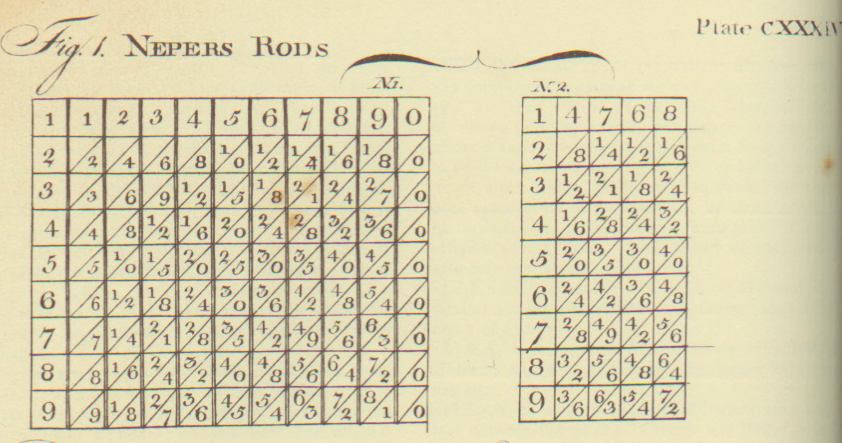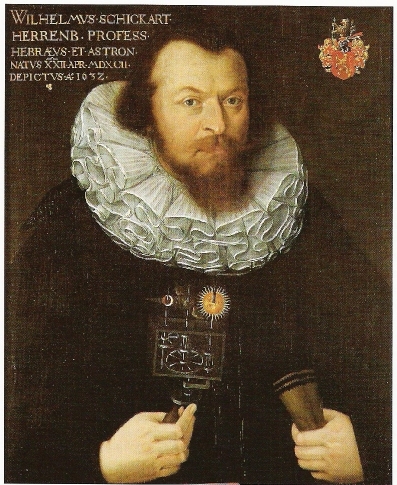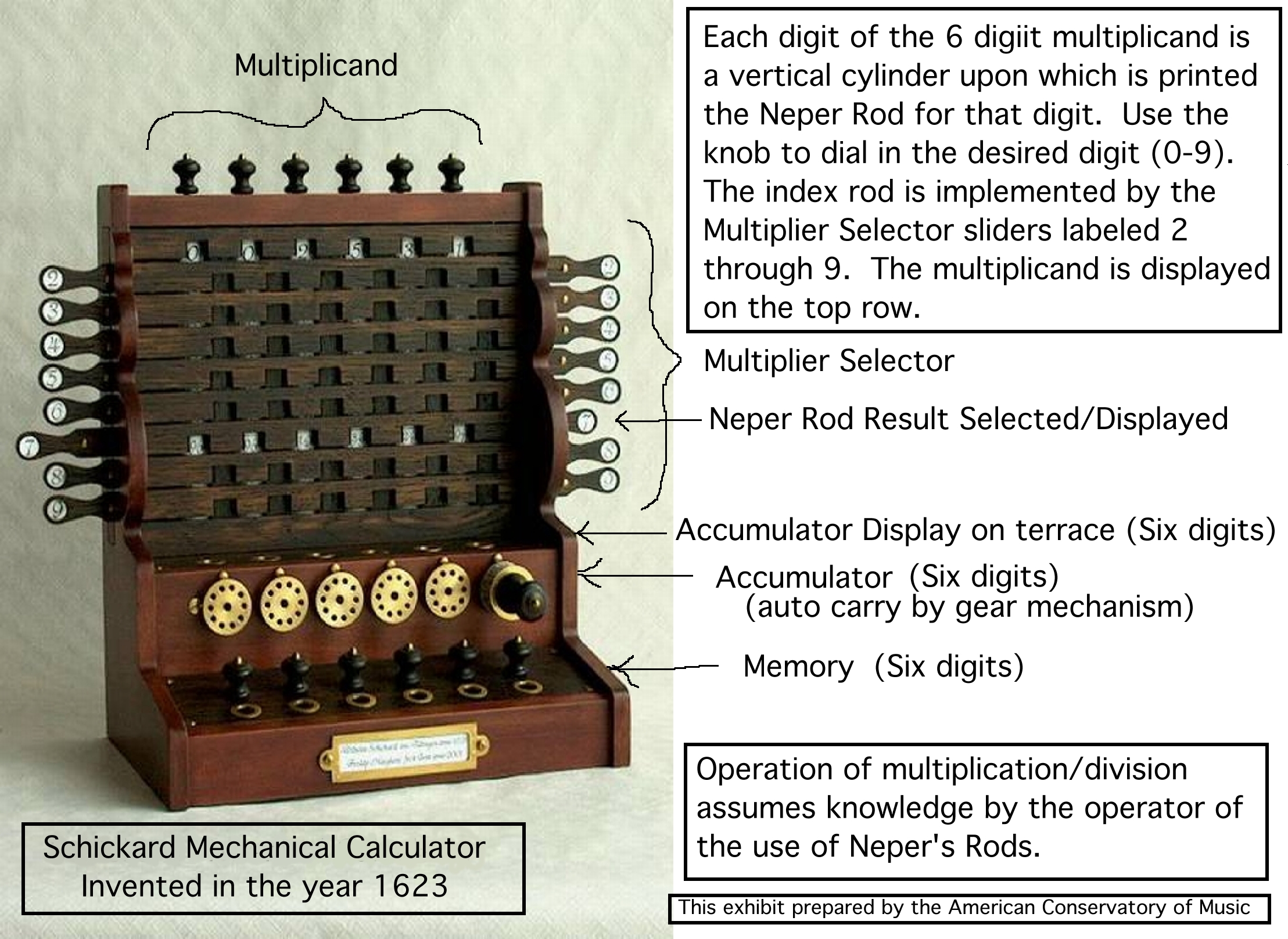
Example: To multiply 4768 by 385. Having set the rods together for the number 4768 (ibid No. 2.)
against 5 in the index, I find this number by adding according to the rule: 23840
against 8, this number 38144
against 3, this number 14304
---------
Total Product 1835680
6123) 2179788 (356
18369
------
34288
30615
------
36738
36738
------
00000

